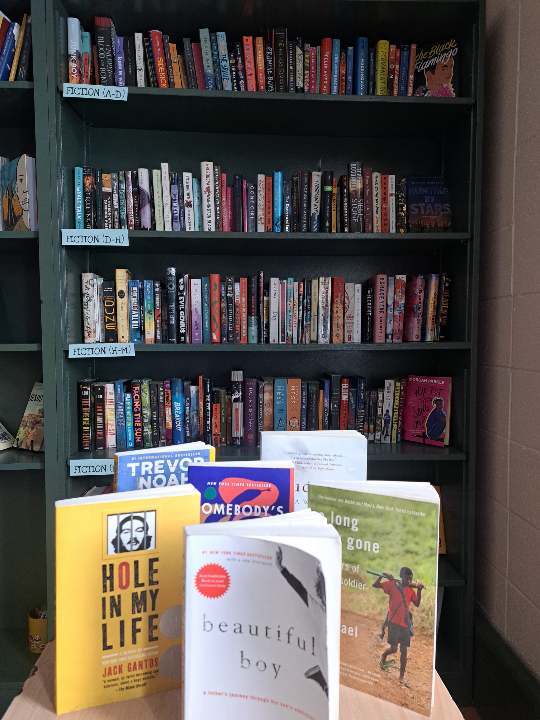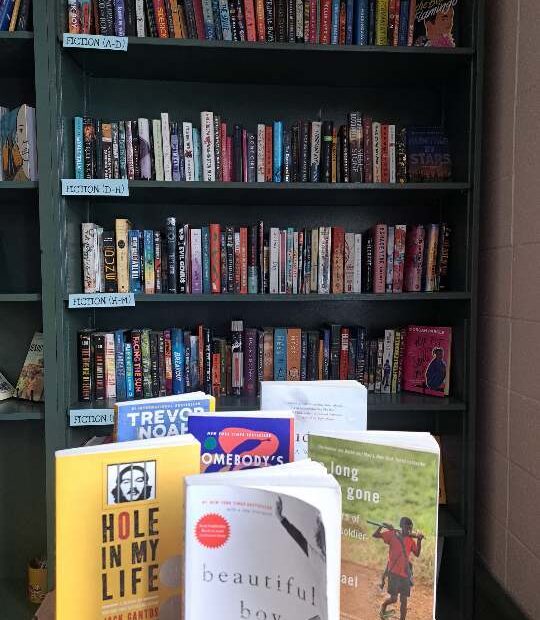5 tips for ensuring success when assigning reading
By Pamela Bussey

My grade 9 students have just started reading their books for book clubs. Every time I assign a book – whether it’s a whole class novel or a book club text – I struggle with what they should be doing in class while reading their books at home and during independent reading time. I also worry that they won’t keep up with the reading or that the reading will be meaningless to them. Over the past few years, I’ve collected a few handful of tips and tricks – mostly from colleagues – to help keep us all on track, and keep my worry at bay.
Here are a few ways that might help you as your students begin book clubs (or whole class novels):
- Schedule three book club meetings. These meetings will happen at the beginning, middle, and end of their books. Students will get into their book club groups and record their conversation. Typically, I grade all three book club meetings for Talk and Reading, and then I include the best two meetings on their report card (using this rubric). Providing students with prompt questions like these and these are essential, otherwise students tend to spend a lot of time summarizing. I always try to get rubric #1 back to them before book talk #2,and so on, so that they know what’s working and what they might try to work on. If you’re looking to narrow your Talk assessment and focus on specific “talk moves,” check out the Oracy toolkit available on the Literacy Today website.
- Give students a detailed reading plan bookmark. This strategy comes from Pernille Ripp and her suggestions on how to incorporate book clubs with middle school students (thanks to my colleague Kimberly Hardy for this tip!). Once students have the dates of their three book club meetings, they will get in groups and decide their reading checkpoints. For example: read until page 102 for book club #1; page 206 for book club #2 and finish the book for book club #3. Following this group decision, students will individually plan out their reading for each day. This may seem tedious but is helpful (especially for younger students) as it forces them to consider how their reading life best fits into their personal and school lives. Some students have weekend jobs or tournaments, and so weekdays are when they’ll get their reading done. For others, weeknights don’t work as they’re tired from school and home responsibilities. I then ask students to look at their bookmark at the end of each independent reading block and check off if they have met their reading goal for that day.
- Have regular check-ins throughout book club. These check-ins might be regular journal entries, quick audio/video responses, or in-class entrance tickets. When my grade 11s read Lullabies for Little Criminals as a class, there are 4 additional check-ins outside of the 3 scheduled book club meetings. These are all structured the same: they are asked to comment on one part of the reading that stood out to them; and respond to one meaningful quote from the text (chosen by me). Here’s an example of what that looks like. Students will often be honest in these and write “did not read,” which helps me to know who needs more support with their reading (i.e. returning to their bookmark plan, helping them access audio versions, suggesting they skim some of the text they’ve missed, etc.)
- Provide assignments that ask them to apply knowledge. While the check-ins and book club meetings are opportunities for students to demonstrate comprehension and analysis, the other work we do in class is about applying knowledge to the text (or making connections between the text and the world). While reading Lullabies for Little Criminals, my students learn about harm reduction, Adverse Childhood Experiences (ACEs), and Child Development theories. This knowledge is then used in several ways:
*Class debates: “Which works best when struggling with addiction: abstinence or harm reduction?” Here’s the rubric I use for production.
*Analysis essay: “How would [Child Development Theorist] analyze the main character of the book?” (e.g. Maria Montessori, John Bowlbly, Jean Piaget, Lev Vygotsky, etc.) Here’s the assignment description I give and the rubric I use.
*Article assignment: “What is your stance on [topic] and how would you persuade others?” (i.e. drug abuse, toxic relationships, poverty, fatherhood, sex trafficking, etc.)
- Set up a reading challenge. For the last couple of years, I’ve issued a reading challenge to students (usually upon our return in January). Usually, the challenge is to read a text of our choice that is not related to school for 15 minutes a day during our free time. The challenge is optional and students sign up. If, by the end of our challenge, there is at least one student still standing, I lose and the students get a prize of their choosing, with some guidance from me (usually, it’s a free period with snacks OR it’s cooking in our school kitchen during the period). I think this could be easily adapted during book clubs or whole class novels – for example, students could compete as groups for the maximum number of pages collectively read in one day or week, or the teacher could compete to read the same number of pages as a whole group. Adding a challenge helps to build a class community around reading and also helps to build or enhance rapport. This is also a chance for students who are big readers to experience group praise and for students who self-describe as non-readers to experience personal and group pride at having met their targets.
Getting students to be consistent with their reading is tricky, and having them engage with a text in meaningful ways often feels like an uphill battle. Hopefully some of these tricks can help when setting students up with a text. If you have other suggestions on how to get students reading, please share them with us! You can contact us on Facebook, Instagram, or through the Submit a Resource section of our website.
